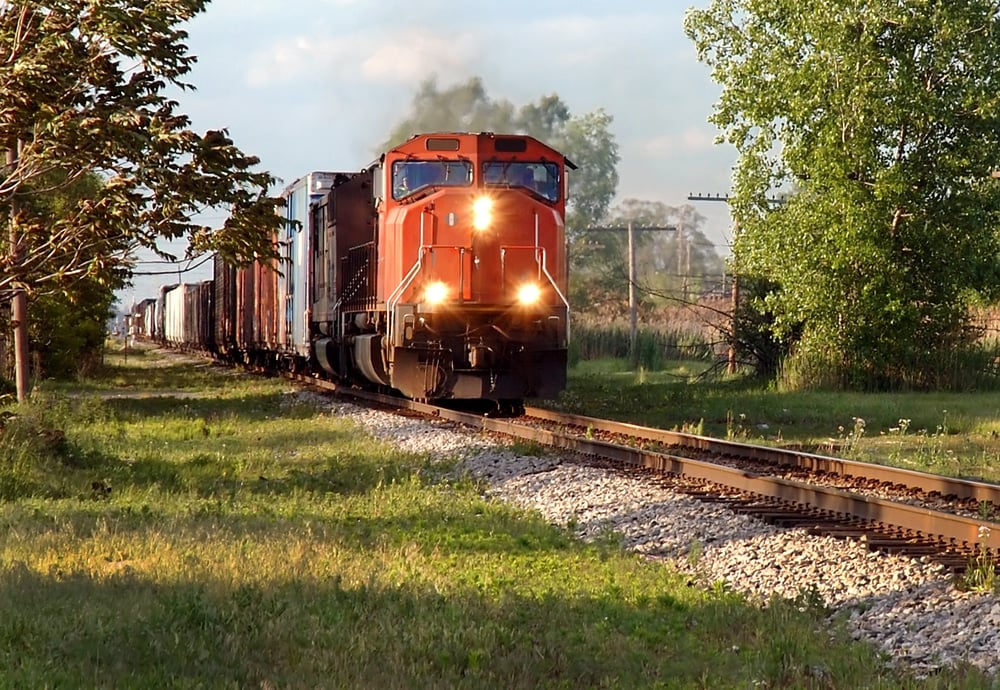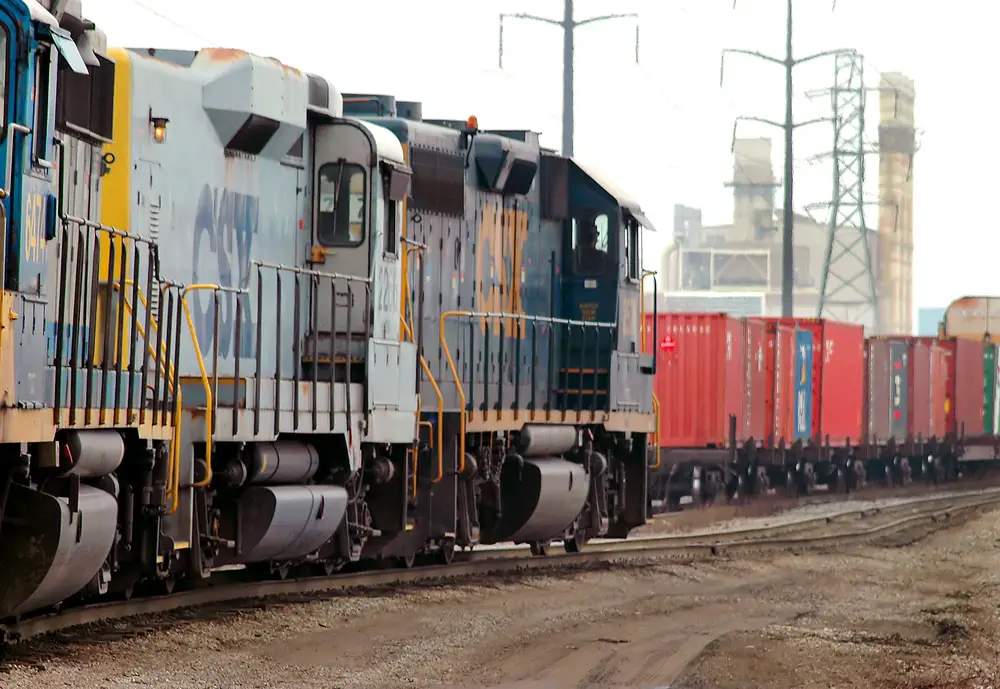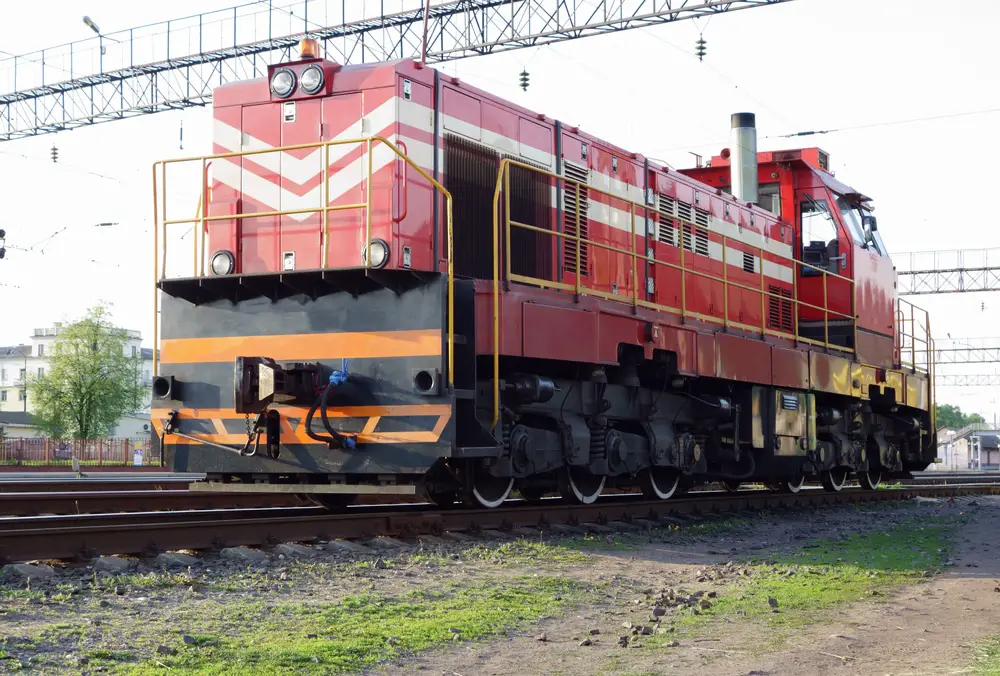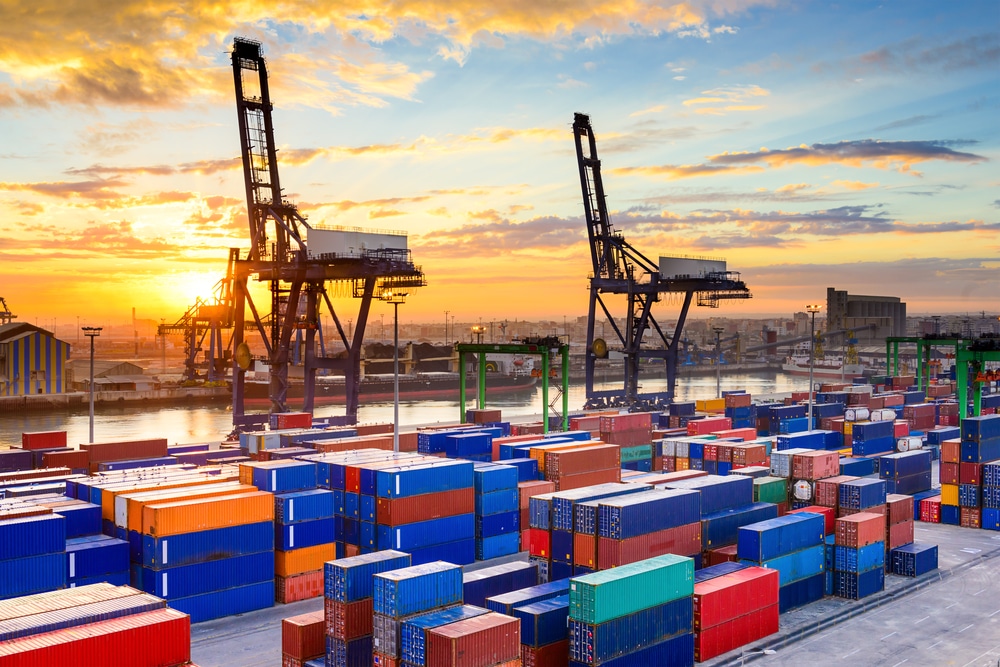So, how fast do freight trains go? The average speed of freight trains ranges from 20 mph to 30 mph. Freight trains carrying heavier loads or having longer cars can run as slow as 5 mph or 10 mph, whereas an empty freight train can travel between 40 mph to 50 mph. However, freight trains are designed to reach 70 mph to 75 mph.

Have you ever wondered how fast freight trains go?
We don’t notice how goods are being transported from one area to another in today’s world.
Freight trains carry construction materials, energy and agriculture products, food, minerals, metals, chemicals, and equipment.
So how long does it take for freight trains to travel from one place to another?
Is there a difference in the freight train speed depending on where you are?
Read on to learn more.
How Fast Do Freight Trains Go?
Freight trains are designed with locomotive engines that automatically shut off when they reach the maximum speed limit of 70 mph to 75 mph (around 910 RPMs).
In the 21st century, freight trains were averaging 20 mph and 25 mph.
In 2006, the average rail speed in the United States was only 20 mph because there were shorter line cars.
The Federal Railroad Administration (FRA) released a study where they designed higher-speed freight truck railcars that can reach 106.5 mph to 125 mph while carrying 70 tons per car.
Although, this is still but a dream of many train crew members.
How Fast Can a Train Go Without Cargo?
The Federal Railroad Administration (FRA) researchers reported that freight trains could reach the speed of 70 mph to 80 mph.
However, most freight trains nowadays travel between 40 mph and 50 mph, even when they are unloaded.
How Fast Can a Train Accelerate?
A heavy freight train can travel at least 6 mph in one minute. This would weigh around 10 pounds per ton.
You can increase the acceleration rate if you also increase the tractive effort.
It’s also important to remember that freight trains with lesser loads and railcars can increase their acceleration and travel faster.
Average Freight Train Speed Depending on Location
Freight trains are monitored differently depending on where you are.
Trains in North America are generally slower compared to the freight trains in Europe and Asia because of different rail networks.
Let’s discuss it further.

How Fast Do Freight Trains Go in North America
North America has the largest freight rail network in the world, with thousands of freight trains on the tracks each day.
Oftentimes, the fastest freight train moving in this rail network can have an average speed of 65 mph to 70 mph, which is an acceptable speed in modern locomotives. But, as mentioned, generally the speed is much slower.
Today, all trains follow the FRA that established a class system for tracking quality and determining the speed limit of both passenger and freight trains.
Track Classes Table Speed Limits
| Track Type | Freight Train | Passenger Train |
| Excepted | <10 mph | not allowed |
| Class 1 | 10 mph | 15 mph |
| Class 2 | 25 mph | 30 mph |
| Class 3 | 40 mph | 60 mph |
| Class 4 | 60 mph | 80 mph |
| Class 5 | 80 mph | 90 mph |
| Class 6 | 110 mph | 110 mph |
| Class 7 | 125 mph | 125 mph |
| Class 8 | 160 mph | 160 mph |
| Class 9 | 220 mph | 220 mph |
The Amtrak Cardinal is a prime example of a class 7 train in the USA.
When thinking about the speed of freight trains, it’s important to remember that there are several factors that affect the speed of trains.
We will discuss this further down below.
How Fast Do Freight Trains Go in the UK & Europe?
Freight trains in Europe travel at different speeds depending on the rail car and track capabilities and infrastructure integrity.
The fastest train in the United Kingdom is included in Class 4, reaching speeds up to 75 mph.
In Germany, lightweight freight trains can reach up to 99 mph, while heavier trains can reach up to 74.5 mph.
In 1984, the world’s fastest train, the TGV Sud-Est, was converted from being a freight train to transporting mail.
They called this the “TGV La Poste” which reached speeds up to 168 mph.
Unfortunately, this was the only time that the TGV La Poste service was used due to logistical and operational changes.
How Fast Do Freight Trains Go in Asia
Compared to freight trains in North America and Europe, the rail freight network in Japan is usually very busy during the evening hours.
They typically use container or intermodal trains, which travel up to 68 mph.
The Japan Railways freight system is specifically designed as a tank wagon for gasoline and crude oil, which typically travels around 59 mph.
Factors That Can Influence How Fast a Freight Train Can Go
As we’ve mentioned earlier, certain factors affect how fast a freight train can go.
1. Track Type
Certainly, the most important factor that affects a train’s speed is the type of track it’s traveling on.
Track infrastructure is so crucial that many countries invest in improving their track railroad systems.
In the United States, many of the tracks are older and are not capable of handling fast-moving trains.
Generally, all freight trains are diesel-powered or part thereof until now.
If the United States would like to compete with other countries’ railway systems, they need to undergo some serious track renovations.
Freight trains are an essential part of keeping the country running. That is why it’s important for the government to look at possible improvements that they can make to improve the track infrastructure system.
2. Lack of Whistle Post
A whistle board is a sign in rail transport where trains are required to whistle or sound the horn.
Areas lacking whistle posts are called dark zones.
In these areas, a conductor can only rely on his crew and sense whether they need to blow the horn or not.
Also, a train would need to slow down when it’s traveling in a dark zone.
For example, a train is traveling where there are no whistle posts, and it is up to the conductor to make the right signal when they see a crossing.
The freight train also needs to go slower because of any potential hazards that may block their way.
Also, when the train moves slowly, it makes it easier for the crew to look around the crossing and help the conductor.
To solve this concern, railroad and country associations can install whistle posts.
3. Dedicated Tracks
Another reason Asian and European freight trains tend to go faster than American trains is because they have dedicated tracks.
They have separate tracks for freight trains and other tracks for passenger trains.
This means that passenger trains do not have to go slower if they meet a freight train ahead of them.
Passenger trains do not need to delay their schedule if they come across a freight train on the same track.
If there are dedicated tracks for freight and passenger, trains can follow their schedule.
This is where the American railroad system needs to improve.
Although, building new railroad tracks can be extremely expensive. Bu, sadly the interest and funding for this are not there yet.
Another problem when creating dedicated tracks is that many railroad systems now are located within the cities. This makes it almost impossible to change them without disturbing many households and businesses.
The European and Asian railroad systems, however, had considered the population growth while building their railroad.

4. Train Tilting Capabilities
The ability of a train that tilted was introduced in the 1980s. Aside from increasing customer comfort, the tilt was thought to help train tackle corners faster.
Freight trains do not have this capability, and due to the heavy loads, I don’t think they ever will. Freight trains have to approach corners slowly to adhere to safety standards and protect the train and its cargo.
Not all trains are designed to ride high-speed tracks because carriages would need to tilt while moving in turns.
5. The Heavy Load Of The Train
The more a train carries, the longer it takes to accelerate and the more horsepower it needs. Also, on the other end, the heavier the load, the longer it takes to stop.
Freight trains carrying coal, ore, or any other mined minerals can be extremely heavy and need multiple locomotives to power it. In fact, the heaviest freight train in the world weighed 99,734tons. YES, that is correct; it was insanely heavy; you can read about it HERE.

Conclusion
So, how fast do freight trains go?
Freight trains in the United States travel between 25 mph to 30 mph.
Whereas freight trains in Europe travel between 75 mph to 99 mph ( well some of them).
And freight trains in Asia travel between 59 mph to 68 mph.
When thinking about the speed of a train, always consider the factors that we’ve mentioned above to know how they can affect the speed of a train.

